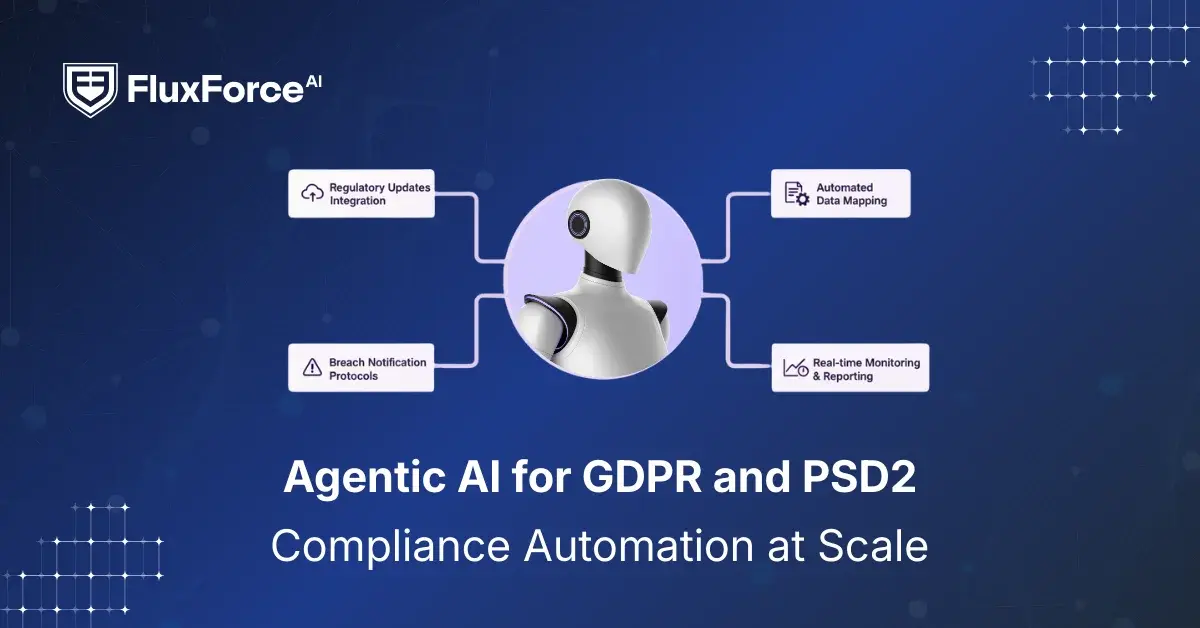Listen to our podcast 🎧

Introduction
Insurance policies are often linked with long-term commitments where payment security becomes as important as policy design itself. Ensuring security in these transactions protects both insurers and policyholders from financial and compliance risks.
For underwriting managers, this adds a critical responsibility: overseeing payment systems that must remain efficient, compliant, and resilient against fraud.
While products such as PPI loans, mortgage PPI, or PPI mortgages protect customers by covering repayments during unforeseen events, far fewer measures address the security of the digital payment infrastructure that drives premium collection and policy servicing.
In this blog, we examine how secure payment gateway strategies enable underwriting managers to strengthen policy payment security while meeting both regulatory and operational demands.
What is Payment Protection Insurance?
Payment protection insurance (PPI) is a coverage designed to help borrowers maintain loan or mortgage repayments during unexpected financial difficulties such as illness, unemployment, or disability.
It protects both customers by ensuring their financial obligations are met and insurers by reducing the risk of missed payments and defaults.
Common payment protection plans include:
- Mortgage payment protection insurance, covering home loan repayments.
- Loan-specific PPI policies, supporting repayments on personal or credit loans.
In regulated markets, PPI products follow strict compliance standards set by US agencies. These standards ensure policies are transparent, protect customers, and reduce financial risk for insurers.
Why Secure Payment Gateways Are Essential for Underwriting Managers
Insurance policy transactions involve sensitive customer information and premium payments. With increasing fraud and the rise of digital insurance, lacking a robust insurance payment gateway exposes companies to operational risks and loss of customer trust. Here’s why securing payment gateways is essential:

1. Preventing Fraud and Unauthorized Transactions:
Secure gateways use encryption, tokenization, and authentication to flag fraudulent attempts. This reduces financial loss and safeguards both the insurer and policyholders against threats.
2. Ensuring Compliance with Regulatory Standards: Payment gateways help maintain PCI DSS compliance and other regulatory requirements, ensuring underwriting managers can meet legal obligations without manual oversight.
3. Streamlining Premium Collection: Automated processing through a secure gateway accelerates payment flows, reduces errors, and allows underwriting teams to focus on policy assessment and risk management.
4. Real-Time Monitoring and Reporting: AI-enabled gateways provide modern features, such as fraud detection analytics, transaction tracking, and reporting tools. They enable managers to detect anomalies instantly and respond proactively.
5.Integrating with Insurance CRM and Policy Systems: Modern payment gateways integrate seamlessly with policy and CRM platforms, creating a unified system for underwriting, payment tracking, and customer service.
.png?width=1200&height=628&name=hubspot%20blog%20(6).png)
Shaping the Future of AI in Finance
Fluxforce research uncovers how banks and enterprises are adapting to fraud, compliance, and data challenges in 2025.
Payment Processing Challenges for Insurance Companies
Insurance payments come with unique challenges that can affect both insurers and policyholders. Handling premiums, mortgage PPI, or other high-risk payments requires careful management to prevent financial losses and maintain customer trust.
Using reliable insurance payment processing services helps companies protect sensitive data, streamline transactions, and stay compliant with industry standards.
Common Risks in Insurance Payment Processing:
- Fraudulent Transactions: Unauthorized or fake payments can lead to financial loss.
- Chargebacks: Customers disputing payments can create extra costs and delays.
- Compliance Failures: Failing to meet regulations like PCI DSS can result in penalties.
- Technical Issues with Legacy Systems: Outdated infrastructure can cause errors, slow processing, or downtime.
- Operational Inefficiency: Manual or poorly integrated systems reduce accuracy and increase workload.
Key Secure Payment Gateway Strategies for Insurance Policy Underwriting
In high-risk insurance payments, such as mortgage instalments or PPI premiums, underwriting managers face increasing pressure to ensure transaction security. Below are some key strategies for secure insurance policy underwriting:
Implement End-to-End Encryption and Tokenization
Protect sensitive customer and payment data by encrypting transactions from initiation to completion. Tokenization replaces card details with unique tokens, minimizing the risk of data breaches and unauthorized access.
Enforce Multi-Layer Authentication
Strong authentication methods, such as OTPs, biometrics, or 2FA, ensure only authorized users can approve payments. Automated AI tools help flag suspicious login or payment attempts, reducing fraud and strengthening trust between insurers and policyholders.
Ensure PCI DSS and Regulatory Compliance
Maintaining compliance with PCI DSS and local regulations is essential. Secure gateways provide automated tools for reporting, audit trails, and compliance verification, reducing manual oversight and regulatory risks.
Enable Real-Time Transaction Monitoring
Advanced gateways leverage machine learning algorithms to provide real-time analytics and alerts for suspicious activity. Underwriting managers can detect anomalies immediately, respond proactively, and prevent potential financial loss or reputational damage efficiently.
Steps for Implementing Secure Online Payment Systems in Insurance Underwriting

Ensuring secure online payment systems is crucial for underwriting managers to protect customer data, maintain compliance, and reduce operational risks. Below are well-structured implementation steps that strengthen digital insurance payment processes:
1. Conduct a Risk Assessment
Evaluate existing payment gateways, software, and processes. Identify vulnerabilities in transaction flows, data storage, and integration points to prioritize upgrades or replacements.
2. Choose a Compliant Payment Gateway
Select gateways that comply with PCI DSS and other regulatory standards. Ensure encryption, tokenization, and fraud detection features are built in.
3. Integrate with Policy and CRM Systems
Seamless integration with insurance CRM and policy systems ensures underwriting teams can track payments, monitor transactions, and manage customer interactions efficiently.
4. Implement Multi-Layered Security Protocols
- Enable two-factor authentication (2FA) for both employees and customers.
- Use end-to-end encryption for data in transit and at rest.
- Deploy real-time monitoring to detect anomalies.
5. Train Underwriting and Operations Teams
Educate staff on secure payment practices, fraud detection, and incident reporting procedures. Regular training reduces human error and strengthens compliance adherence.
6. Monitor, Test, and Optimize Continuously
Perform routine audits, penetration tests, and performance checks. Update security protocols as threats evolve, ensuring the insurance payment processing system remains resilient against cyber risks.
Payment Security Best Practices for Insurance Underwriting Managers
.webp?width=1200&height=800&name=Steps%20for%20Implementing%20Secure%20Online%20Payment%20Systems%20in%20Insurance%20Underwriting%20(2).webp)
Underwriting managers are responsible for protecting sensitive customer payment data and managing financial risk for insurance companies. Failure to do so can lead to fraud, regulatory penalties, and reputational damage. Here is a checklist for ensuring successful payment security:
1. Adhere to Industry Standards and Regulations
- Ensure PCI DSS compliance: secure network, strong access controls, regular monitoring.
- Validate compliance via self-assessment questionnaire or Qualified Security Assessor (QSA) audit.
- Follow data protection laws like GDPR and HIPAA when handling personal or payment data.
2. Implement Strong Technical Controls /h3>
- Use encryption and tokenization to secure data in transit and at rest.
- Enforce multi-factor authentication (MFA) for employees and customers.
- Employ secure, PCI-compliant payment gateways or trusted third-party providers.
- Apply AI-based fraud detection to identify suspicious transactions in real time.
3. Strengthen Internal Processes and Policies
- Train employees on security processes, phishing detection, and reporting threats.
- Implement least privilege access controls and review permissions regularly.
- Apply data minimization, storing only essential customer and payment information.
- Vet vendors and service providers for robust security and regulatory compliance.
4. Proactive Monitoring and Auditing
- Conduct regular security audits, vulnerability assessments, and penetration testing.
- Use continuous monitoring tools to detect unusual activity.
- Maintain and test an incident response plan for breaches and customer notification.
5. Modernize Payment Systems
- Replace manual processes with secure digital payment options like encrypted fields and digital wallets.
- Use AI and automation for data entry, reconciliation, and error reduction.
Conclusion
With digital insurance, the role of an underwriting manager is not limited to evaluating risks and approving policies. They also ensure the security of sensitive customer data and the smooth flow of premiums through the payment gateway.
As fraudulent transactions, chargebacks, and compliance failures continue to rise, underwriting managers must take proactive measures. Integrating secure, AI-powered insurance payment gateways allows every transaction to be monitored, verified, and processed efficiently.
This approach not only protects insurers and policyholders from financial loss but also strengthens trust and regulatory compliance.







Share this article